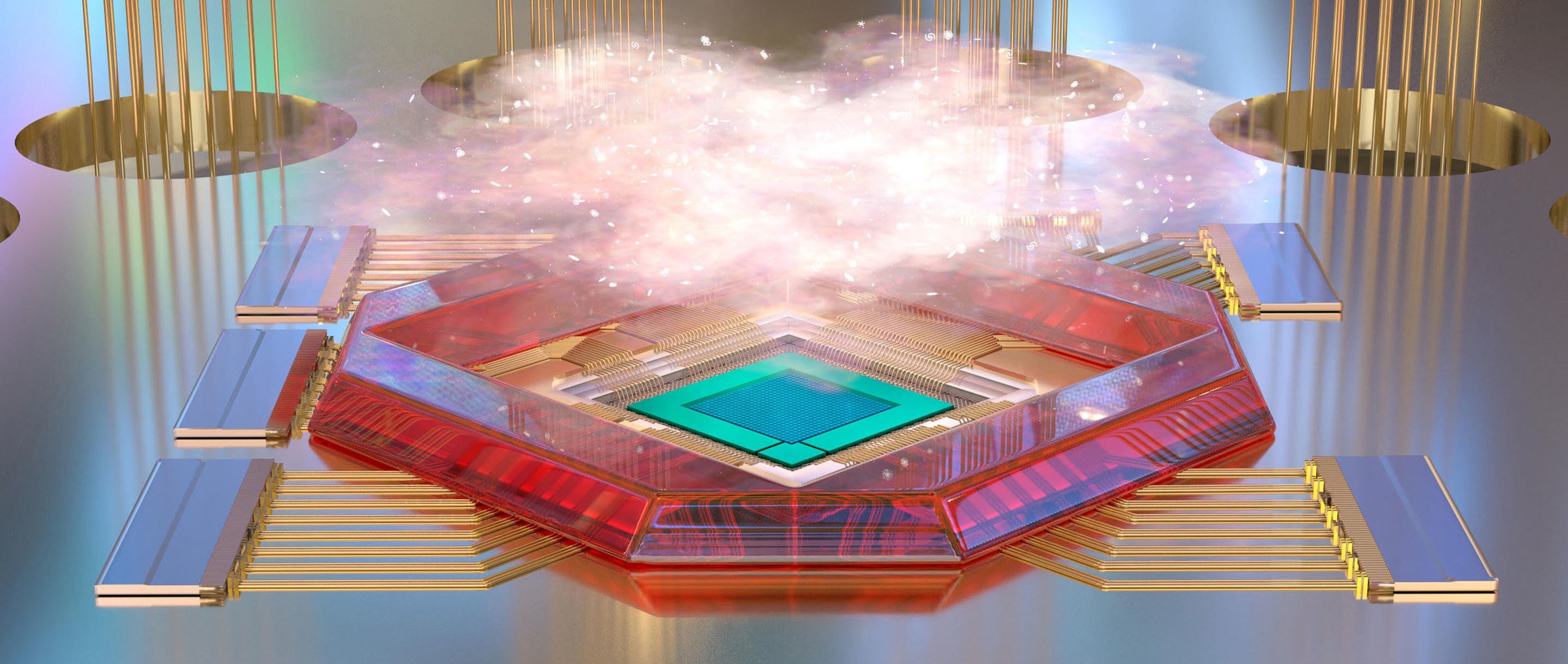
#Quantum error correcting codes code
“heavy hex” code with decreased connectivity, with qubits arranged on the edges and vertices of hexagons in a tessellation. While IBM Quantum once considered square lattice topologies and the accompanying surface code, we found that we could decrease frequency collisions by moving to a As of August 8, 2021, the topology of all active IBM Quantum devices will use the heavy-hex lattice, including the IBM Quantum System One’s Falcon processors installed in Germany and Japan. From square to heavy-hex lattice topology This code can take on different shapes, most notably the “surface code,” which looks like a checkerboard. Provided that our qubits have an innate error rate below some threshold, then we can encode the qubits by building a structure of data and helper qubits that is impervious to errors. This decoding uses parity measurements, also called stabilizers, where we entangle helper quantum bits with the computational qubits, measure them to look for indirect signs of error, and then fix the error. Noise induces slight changes to the quantum state, and then we decode this information, or return a value that takes into account our knowledge of how an error would impact the encoded information. Like classical error correction, quantum error correction begins by encoding information, or spreading quantum information over a system of multiple redundant qubits. Quantum errors are more complex than a classical computer’s errors. If you imagine a classical bit as a light switch, then a quantum bit, or qubit, is more like a dimmer whose switch can move to any position on a sphere bit flip errors move the switch closer to the top or bottom than desired, while phase errors rotate the dimmer around the sphere. Quantum errors are more complex than a classical computer’s errors, of course: classical errors consist only of bit flips, where bits might change from a 1 to a 0, but quantum bits can enter superposition, taking on combinations of 0 and 1 with an associated angle called a phase, which can also error. Merely building redundancies into the computation is out of the question, too - the theory of quantum mechanics tells us that it’s impossible to duplicate an unknown quantum state. quantum error correction? Every step of quantum computation, and even the outside environment, has the potential to introduce errors and cause the processor to lose quantum information. So, why do we need At IBM, we develop bottom-up approaches to the problem of noisy qubits and incorporate error correction techniques to realize this technology’s true potential. After all, error correction and hardware development aren’t silos - here at IBM Quantum, we actively co-design our error-correcting codes alongside our ever-advancing hardware roadmap. While we still have our work cut out for us, performing studies such as these helps us chart the course of quantum processor development and ensures that we’ll be ready to build fault-tolerant processors once our hardware has matured. These experiments aren’t just bringing error correction closer to reality each one teaches us more about our hardware and what causes errors than merely theory alone. Specifically:ĭefinition 1 Let H n be a 2 n-dimensional Hilbert space (n qubits), and let C be a K-dimensional subspace of H n.In just the last year, our team has presented several notable papers demonstrating error correction implemented on real quantum hardware. In general, a quantum error-correcting code is a subspace of a Hilbert space designed so that any of a set of possible errors can be corrected by an appropriate quantum operation.
#Quantum error correcting codes how to
The theory of fault-tolerant quantum computation tells us how to perform operations on states encoded in a quantum error-correcting code without compromising the code's ability to protect against errors. To build a quantum computer, we face an even more daunting task: If our quantum gates are imperfect, everything we do will add to the error. By adding extra qubits and carefully encoding the quantum state we wish to protect, a quantum system can be insulated to great extent against errors. The theory of quantum error-correcting codes has been developed to counteract noise introduced in this way.


Any qubit stored unprotected or one transmitted through a communications channel will inevitably come out at least slightly changed. Building a quantum computer or a quantum communications device in the real world means having to deal with errors.


 0 kommentar(er)
0 kommentar(er)
